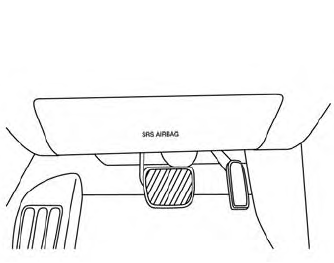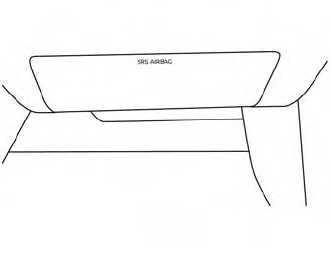Nissan Murano: Towing your vehicle / Vehicle recovery (freeing a stuck vehicle).
WARNING
To avoid vehicle damage, serious personal injury or death when recovering a stuck vehicle:
- Contact a professional towing service to recover the vehicle if you have any questions regarding the recovery procedure.
- Tow chains or cables must be attached only to main structural members of the vehicle.
- Do not use the vehicle tie-downs to tow or free a stuck vehicle.
- Only use devices specifically designed for vehicle recovery and follow the manufacturer’s instructions.
- Always pull the recovery device straight out from the front of the vehicle. Never pull at an angle.
- Route recovery devices so they do not touch any part of the vehicle except the attachment point.
If your vehicle is stuck in sand, snow, mud, etc., use a tow strap or other device designed specifically for vehicle recovery. Always follow the manufacturer’s instructions for the recovery device.
Rocking a stuck vehicle
WARNING
- Stand clear of a stuck vehicle.
- Do not spin your tires at high speed. This could cause them to explode and result in serious injury. Parts of your vehicle could also overheat and be damaged.
- If your vehicle is stuck in sand, snow, mud, etc., use the following procedure:
- Turn off the Vehicle Dynamic Control (VDC) system.
- Make sure the area in front and behind the vehicle is clear of obstructions.
- Turn the steering wheel right and left to
clear an area around the front tires.
- Slowly rock the vehicle forward and backward.
- Shift back and forth between R (Reverse) and D (Drive).
- Apply the accelerator as little as possible to maintain the rocking motion.
- Release the accelerator pedal before shifting between R (Reverse) and D (Drive).
- Do not spin the tires above 35 mph (55 km/h).
- If the vehicle cannot be freed after a few tries, contact a professional towing service to remove the vehicle.
 Two-Wheel Drive models with Continuously Variable Transmission (CVT)
Two-Wheel Drive models with Continuously Variable Transmission (CVT)
NISSAN recommends that your vehicle be
towed with the driving (front) wheels off the
ground or place the vehicle on a flatbed
truck as illustrated...
Other information:
Nissan Murano 2015-2024 Owners Manual: NISSAN Intelligent Key® battery discharge
If the battery of the NISSAN Intelligent Key® is discharged, or environmental conditions interfere with the Intelligent Key operation, start the engine according to the following procedure: Place the shift lever in the P (Park) position. Firmly apply the foot brake...
Nissan Murano 2015-2024 Owners Manual: How to switch the display
With the ignition switch in the ON position, press the CAMERA button or move the shift lever to the R (Reverse) position to operate the Intelligent Around View Monitor. The Intelligent Around View Monitor displays different split screen views depending on the position of the shift lever...
Categories
- Manuals Home
- Nissan Murano Owners Manual
- Nissan Murano Service Manual
- Vehicle Dynamic Control (VDC) OFF switch
- Indicator lights
- Fuel recommendation
- New on site
- Most important about car
Driver and passenger supplemental knee air bag

Driver’s side
The knee air bag is located in the knee bolster, on the driver’s and passenger’s side. All of the information, cautions and warnings in this manual apply and must be followed. The knee air bag is designed to inflate in higher severity frontal collisions, although it may inflate if the forces in another type of collision are similar to those of a higher severity frontal impact. It may not inflate in certain collisions.

Passenger’s side

